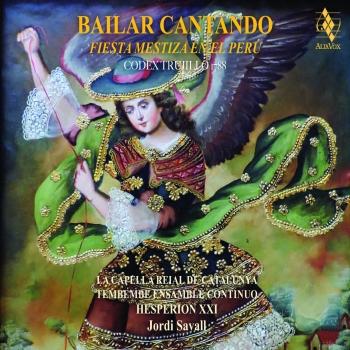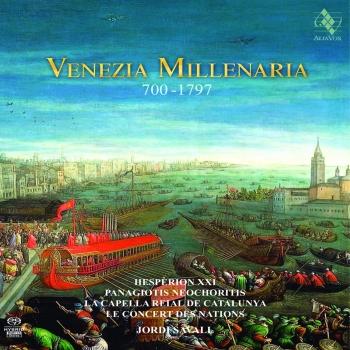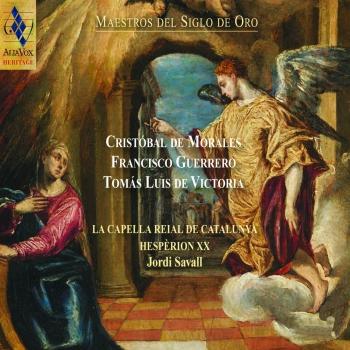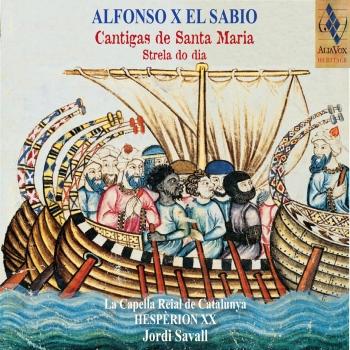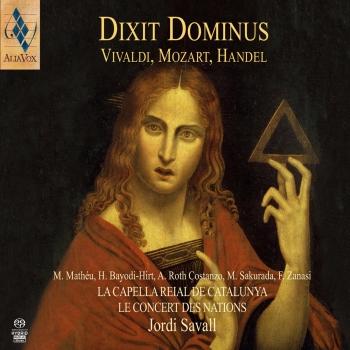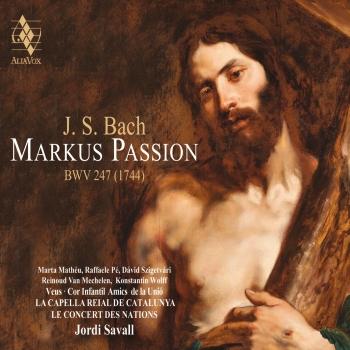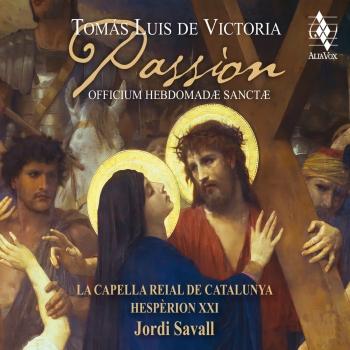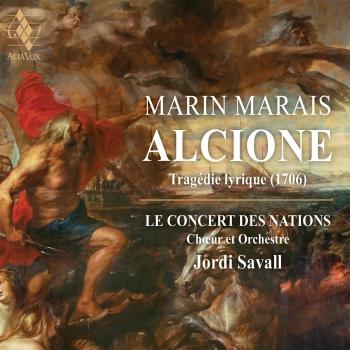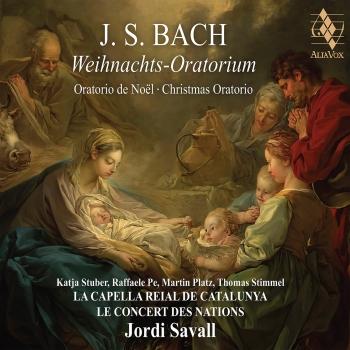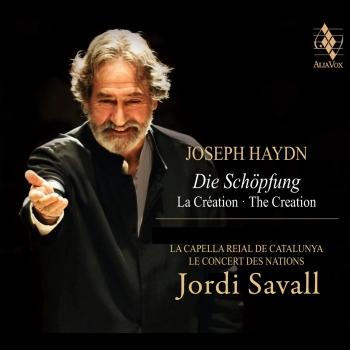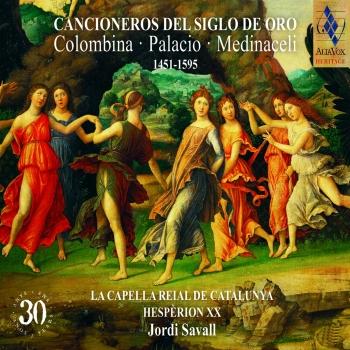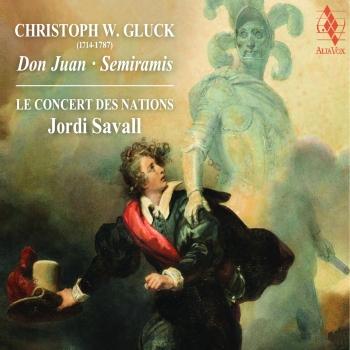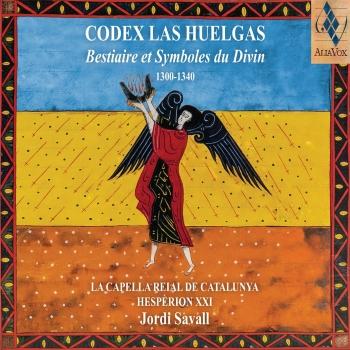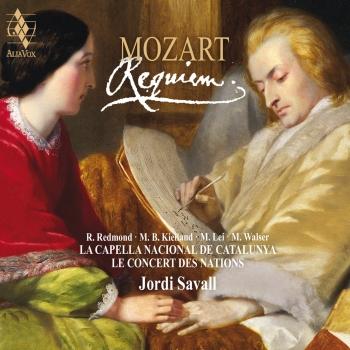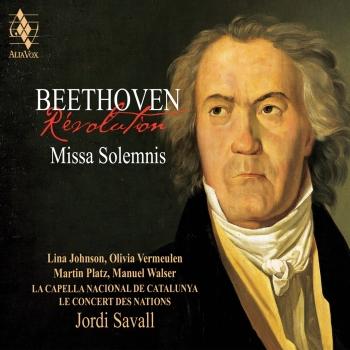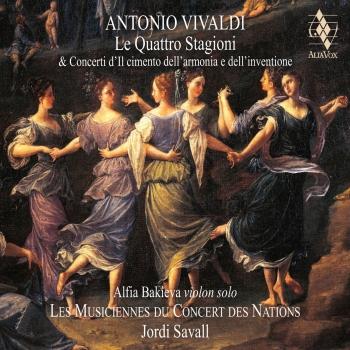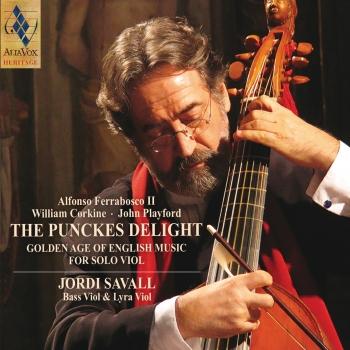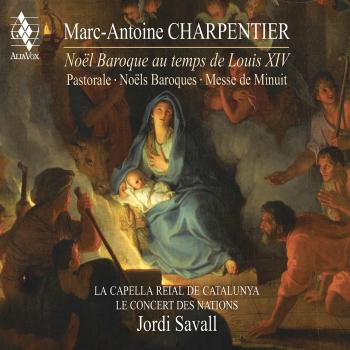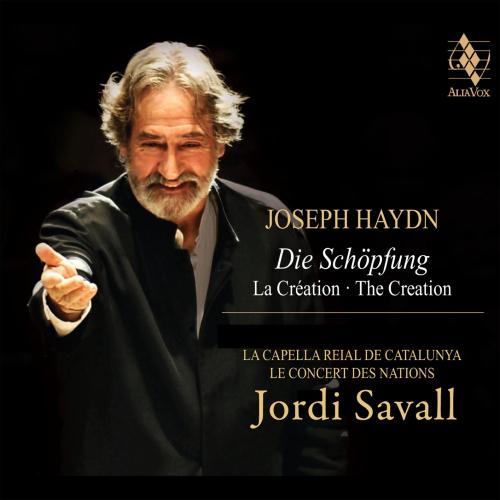
Joseph Haydn: Die Schöpfung Jordi Savall
Album info
Album-Release:
2021
HRA-Release:
17.12.2021
Label: Alia Vox
Genre: Classical
Subgenre: Vocal
Artist: Jordi Savall
Composer: Franz Joseph Haydn (1732-1809)
Album including Album cover
- Joseph Haydn (1732 - 1809): Die Schöpfung, Hob. XXI:2, Teil I:
- 1 Haydn: Die Schöpfung, Hob. XXI:2, Teil I: Präludium: Die Vorstellung des Chaos 05:47
- 2 Haydn: Die Schöpfung, Hob. XXI:2, Teil I, Tag 1: Im Anfange schuf Gott Himmel und Erde (Raphael, Uriel) 01:09
- 3 Haydn: Die Schöpfung, Hob. XXI:2, Teil I, Tag 1: Und der Geist Gottes schwebte auf der Fläche der Wasser (Chor) 01:27
- 4 Haydn: Die Schöpfung, Hob. XXI:2, Teil I, Tag 1: Nun schwanden vor dem heiligen Strahle (Uriel, Chor) 03:52
- 5 Haydn: Die Schöpfung, Hob. XXI:2, Teil I, Tag 2: Und Gott machte das Firmament (Raphael) 01:50
- 6 Haydn: Die Schöpfung, Hob. XXI:2, Teil I, Tag 2: Mit Staunen sieht das Wunderwerk (Gabriel, Chor) 02:04
- 7 Haydn: Die Schöpfung, Hob. XXI:2, Teil I, Tag 3: Und Gott sprach: Es sammle sich das Wasser under dem Himmel (Raphael) 00:38
- 8 Haydn: Die Schöpfung, Hob. XXI:2, Teil I, Tag 3: Rollend in schäumenden Wellen (Raphael) 03:52
- 9 Haydn: Die Schöpfung, Hob. XXI:2, Teil I, Tag 3: Und Gott sprach, Es bringe die Erde Gras hervor (Gabriel) 00:32
- 10 Haydn: Die Schöpfung, Hob. XXI:2, Teil I, Tag 3: Nun beut die Flur das frische Grün (Gabriel) 05:17
- 11 Haydn: Die Schöpfung, Hob. XXI:2, Teil I, Tag 3: Und die himmlischen Heerscharen verkündigten den dritten Tag (Uriel) 00:11
- 12 Haydn: Die Schöpfung, Hob. XXI:2, Teil I, Tag 3: Stimmt an die Saiten, ergreift die Leier (Chor) 02:09
- 13 Haydn: Die Schöpfung, Hob. XXI:2, Teil I, Tag 4: Und Gott sprach, Es sei’n Lichter an der Feste (Uriel) 00:37
- 14 Haydn: Die Schöpfung, Hob. XXI:2, Teil I, Tag 4: In vollem Glanze steiget jetzt die Sonne (Uriel) 02:36
- 15 Haydn: Die Schöpfung, Hob. XXI:2, Teil I, Tag 4: Die Himmel erzählen die Ehre Gottes (Gabriel, Uriel, Raphael) 04:14
- Die Schöpfung, Hob. XXI:2, Teil II:
- 16 Haydn: Die Schöpfung, Hob. XXI:2, Teil II, Tag 5: Und Gott sprach: Es bringe das Wasser (Gabriel) 00:26
- 17 Haydn: Die Schöpfung, Hob. XXI:2, Teil II, Tag 5: Auf starkem Fittiche schwinget sich (Gabriel) 07:38
- 18 Haydn: Die Schöpfung, Hob. XXI:2, Teil II, Tag 5: Und Gott schuf große Walfische (Raphael, Chor) 02:32
- 19 Haydn: Die Schöpfung, Hob. XXI:2, Teil II, Tag 5: In holder Anmut stehn’n mit jungem (Gabriel, Uriel, Raphael) 04:39
- 20 Haydn: Die Schöpfung, Hob. XXI:2, Teil II, Tag 5: Der Herr ist groß in seiner Macht (Gabriel, Uriel, Raphael, Chor) 02:36
- 21 Haydn: Die Schöpfung, Hob. XXI:2, Teil II, Tag 6: Und Gott sprach, Es bringe die Erde hervor (Raphael) 00:29
- 22 Haydn: Die Schöpfung, Hob. XXI:2, Teil II, Tag 6: Gleich öffnet sich der Erde Schoß (Raphael) 02:47
- 23 Haydn: Die Schöpfung, Hob. XXI:2, Teil II, Tag 6: Nun scheint in vollem Glanze der Himmel (Raphael) 03:26
- 24 Haydn: Die Schöpfung, Hob. XXI:2, Teil II, Tag 6: Und Gott schuf den Menschen nach seinem Ebenbilde (Uriel) 00:43
- 25 Haydn: Die Schöpfung, Hob. XXI:2, Teil II, Tag 6: Mit Würd’ und Hoheit angetan (Uriel) 03:38
- 26 Haydn: Die Schöpfung, Hob. XXI:2, Teil II, Tag 6: Und Gott sah jedes Ding, was er gemacht hatte (Raphael) 00:24
- 27 Haydn: Die Schöpfung, Hob. XXI:2, Teil II, Tag 6: Vollendet ist das große Werk (Gabriel, Uriel, Raphael, Chor) 08:57
- Die Schöpfung, Hob. XXI:2, Teil III:
- 28 Haydn: Die Schöpfung, Hob. XXI:2, Teil III: Aus Rosenwolken bricht, geweckt durch süßen Klang, der Morgen (Uriel) 03:53
- 29 Haydn: Die Schöpfung, Hob. XXI:2, Teil III: Von deiner Güt’, o Herr und Gott (Eva, Adam, Chor) 09:47
- 30 Haydn: Die Schöpfung, Hob. XXI:2, Teil III: Nun ist die erste Pflicht erfüllt (Adam, Eva) 02:24
- 31 Haydn: Die Schöpfung, Hob. XXI:2, Teil III: Holde Gattin! Dir zur Seite (Adam, Eva) 08:10
- 32 Haydn: Die Schöpfung, Hob. XXI:2, Teil III: O glücklich Paar, und glücklich immerfort (Uriel) 00:25
- 33 Haydn: Die Schöpfung, Hob. XXI:2, Teil III: Singt dem Herren alle Stimmen! (Chor) 03:55
Info for Joseph Haydn: Die Schöpfung
Jordi Savall leads La Capella Reial de Catalunya and Le Concert des Nations in Haydn's The Creation. The composer confessed that while composing he had "felt an extraordinary religious fervor." However, this work was also inspired by the spirituality of the Viennese Masonic lodges of his day. It is above all the first secular oratorio, in the sense that its message is addressed to all mankind, exactly like The Magic Flute, in operati.
Yeree Suh, soprano
Tilman Lichdi, tenor
Matthias Winckhler, baritone
La Capella Reial de Catalunya
Le Concert des Nations
Jordi Savall, conductor
Jordi Savall
Born on August 1, 1941, in Igualada, near Barcelona, Spain; married Montserrat Figueras (a musician), 1968. Education: Barcelona Conservatory, diploma; Schola Cantorum Basiliensis, diploma, 1970. Addresses: Record company---Naive Classique, 148 rue du Faubourg Possinière, 75010 Paris, France.
The works performed by Catalan gambist and conductor Jordi Savall span several centuries---from the music of Alfonso el Sabio, king of Castile and Léon, to the works of J. S. Bach---bringing to life the splendor and passion of bygone eras. A performance by Savall is more than a musical experience: the extraordinary power and beauty of his playing magically removes the listener from the flux of time, creating a space in which such obstacles to enjoyment as historical distance, stylistic peculiarities, and idiomatic enigmas simply disappear. For example, historical periods, including the Baroque, have often been described as "distant." Indeed, the physical and mental universe of seventeenth-century France may seem distant to a person living in the twenty-first century. But that distance vanishes when Savall plays the music of the great French master of the bass viol, Marin Marais.
First of all, Savall's main instrument is the viola da gamba, or bass viol (he also plays the smaller viols), not as a quaint relic that needs some special justification or antiquarian explanation. True, in the late 1700s, the viola da gamba---which is not a different kind of cello, but a member of the viol family, a distinct group of instruments of varying sizes---was supplanted by the cello, as the latter instrument, with its potential for virtuosity, satisfied the requirements of changing musical styles. However, to Savall, his instrument is irreplaceable. In fact, according to Savall, the viola da gamba has a particular sonic richness that the more "modern" cello lacks. As Savall explained to Chris Pasles of the Los Angeles Times, the "viola da gamba is totally different from a cello. It's closer to the lute---a lute with a bow, in fact. With six strings, frets like a guitar, a softer sound, it's more rich in different colors." Instead of merely reproducing a particular musical composition, Savall captures and expresses the timeless humanity of the music, illuminating the particular composition as a universally comprehensible document of the human experience. A case in point is Savall's mesmerizing performance of Marais's musical description, found in Book V of his Pièces de viole, of his gallstone operation. Written under the influence of François Couperin's character pieces, this extraordinary composition, especially in Savall's version, remains one of the most suggestively dramatic works of Baroque music.
Born in 1941, near the Catalan city of Barcelona, Savall began his musical education at the age of six. After graduation from the Barcelona Conservatory, where he studied the cello, Savall went to Basel, Switzerland, where he studied the viola da gamba with August Wenzinger at the Schola Cantorum Basiliensis, receiving a diploma in 1970. His other teachers included Wieland Kuijken, in Brussels. In 1973 Savall took over Wenzinger's post at the Schola Cantorum. By the early 1970s, Savall was already considered one the greatest viola da gamba players. In addition, he worked hard to enrich his instrument's repertoire, rescuing many works from oblivion and performing and recording numerous forgotten compositions. Savall thus exemplified, as he still does, the learned performer, who constantly studies the vast field of old music, bringing many neglected compositions to light. Among these lesser-known compositions are works by Marais, whose rich and fascinating oeuvre includes more than 500 pieces for viola da gamba and keyboard accompaniment, assembled in five books of his Pièces de viole.
In 1974 Savall and his wife, soprano Montserrat Figueras, founded Hespèrion XX---later, in the twenty-first century, known as Hespèrion XXI---an international ensemble that has gained great acclaim for its extraordinary performances of music from the Middle Ages to the Baroque. In 1987, returning to his native city after his extensive sojourn in foreign lands, Savall formed the Capella Reial de Catalunya, a vocal group that, under his direction, has performed and recorded music by Tomáa Luis de Victoria, Francisco Guerrero, and Claudio Monteverdi.
In 1989, further expanding his repertoire and musical activities, Savall founded the Concert des Nations, an ensemble consisting of younger musicians from Spain and Latin America. Under Savall's direction, this orchestra, which plays on period instruments, has recorded a variety of works from the Baroque and Classical periods.
Savall's career received a tremendous boost when film director Alain Corneau asked him to play on the soundtrack for Tous les matins du monde, his 1992 film about Marais and his teacher, Sainte-Colombe. Based on Pascal Quignard's admirable 1991 novel--available in English as All the World's Mornings--which imagines the life of the mysterious Sieur de Sainte-Colombe, the film is a spell-binding portrait of seventeenth-century France with the music, performed by Savall, providing a foundation for the narrative. Savall himself indirectly inspired Quignard's novel: it was a 1976 recording by Savall that introduced the writer to Sainte-Colombe's music. The music that Savall performs on the soundtrack is mostly by Marais and Sainte-Colombe, though it also includes a segment of François Couperin's deeply spiritual Leçons des ténèbres. Savall is inspired in his performance of the heartrending Tombeau les regrets, which, in Quignard's imagination, Sainte-Colombe played to conjure up the spirit of his deceased wife. In Savall's hands, this music, which appears as a leitmotif throughout the film, graces the rich tapestry of the film as a mysterious aura.
In 1988 the French Ministry of Culture awarded Savall the title of Officier de l'Ordre des Arts et Lettres. His recordings, numbering more than one hundred, have received many awards, including the Double Disc of Gold and the Diapason d'Or. In 1997 Savall's recording company, Astrée, founded a separate label, Fontalis, for his recordings. The following year, Savall started his own label, Alia Vox, which later reissued many of his earlier recordings at an affordable price. Savall's remarkable career is more than a personal triumph: thanks to his superb musicianship, the viola de gamba has emerged from the shadows of the past, becoming the instrument of choice for many younger performers. For such performers, the rich repertoire of the Renaissance and Baroque offers not only infinite artistic challenges and possibilities but the opportunity to abolish the somewhat artificial barrier separating "early" music from the rest of the musical tradition. (Zoran Minderovic)
This album contains no booklet.












